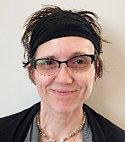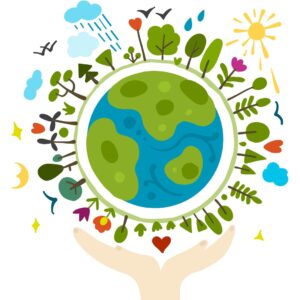
Stephanie Morrissette
Stephanie Morrissette is an avid naturalist and is a Library Assistant at the Reference and Local History Department at CDPL.
 Community-based environmental science, also called citizen science, relies on public input through volunteer action, to collect data in order to enact change in environmental aspects, including conservation, restoration, preservation, and environmental law and policy. Citizen science has been around since the 1990s when the internet exploded, and scientists learned they could request help from the community on different environmental issues and have them reported, utilizing a crowdsourcing method.
Community-based environmental science, also called citizen science, relies on public input through volunteer action, to collect data in order to enact change in environmental aspects, including conservation, restoration, preservation, and environmental law and policy. Citizen science has been around since the 1990s when the internet exploded, and scientists learned they could request help from the community on different environmental issues and have them reported, utilizing a crowdsourcing method.
Crowdsourcing means enlisting the services of a large number of people to obtain information on a massive scale, generally via the web. Basically, we are assisting the scientific community when we, the public, voluntarily help conduct scientific research. Citizen scientists may design experiments, collect data, analyze results, and solve problems. The great thing about this collective data gathering is that it is age-appropriate (anyone can do it!), family-friendly, and easy to understand, observe, record, and share information with the rest of the world.
The National Geographic Society, NASA, and even the Smithsonian have ways in which the public can be involved with projects. There is even a government organization called CitizenScience.org, which dedicates itself to initiatives that bring together citizens and scientists in every discipline. Other organizations that use citizen science include Monarch Watch, where the public helps count monarch butterflies, tag them, and record their numbers for submission to the project. Also, the EarthEcho Water Challenge counts on the public to monitor water bodies to protect local waterways.
To begin your own citizen science quest, you might want to read a Field Guide to Citizen Science by Darlene Cavalier (507.2 Cav) or the Citizen Science Guide for Families: Taking Part in Real Science by Greg Landgraf (500 Lan). Both of these books give a good overview of what community-based science involves. In digital format, we have Citizen Science by Caren Cooper (hoopla), and Citizen Science: Public Participation in Environmental Research (eds. Dickinson J. L., and Bonney, R.), also available on Hoopla.
There are literally hundreds of citizen science opportunities that can be done right here in Montgomery County. The Hoosier Mushroom Society, as part of the North American Mycoflora Project, identifies, collects, and documents all mushroom species found in Indiana. Another organization part of the citizen science movement is the Indiana Backyard Observers, in which participants find a plant or animal in their backyard, observe it, and record changes via an app that can be downloaded to their phone (like iNaturalist or Nature’s Notebook). Finally, Earthwise Aware asks volunteers to monitor native insect species and populations (this project uses a companion app called Caterpillars Count! to record observations).
It is important that our environment is in the center spotlight during Earth Month, in April, and beyond. Citizen science opportunities are virtually endless, and you can check out a list at the website www.SciStarter.org, where science is performed together. It takes a global effort to affect our environment, from one person to many. Without community support, scientists would have a much more challenging task. Together, we make an impact through observations, data recording, and submitted research. We are bringing our community closer to a greener environment, and it all starts with us.
Would you like to learn more about the Citizen Science movement? Stop by the Reference desk at CDPL. We are open Mondays-Thursdays, from 9 am to 9 pm; Fridays and Saturdays, from 9 am to 5 pm, and on Sundays, from 1 pm to 5 pm.
